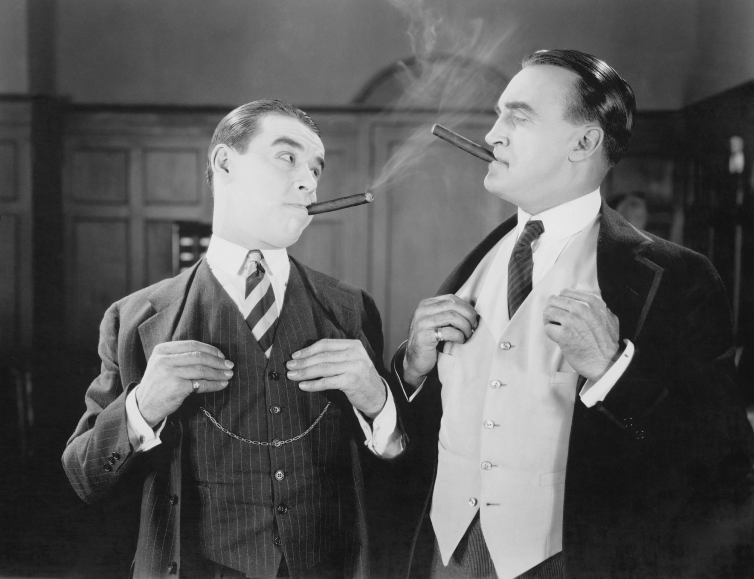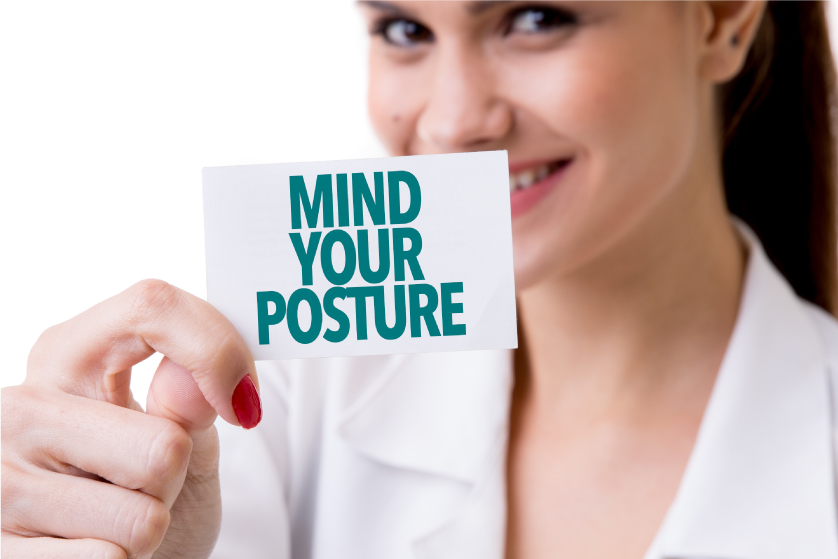Become a Master Communicator: The Importance of Body Language

Every good business relationship begins with strong communication skills. Whether you are meeting a client face to face, skyping with someone halfway across the world or giving or listening to a presentation, communication is always in play.
But the best communication consists of more than speech, more than the words you use. The most effective communicators realize that creating empathy and understanding involves not just your voice box, but your whole body.
Body language and nonverbal cues are critical to strong communication. Consider what happens when two people who do not speak the same language meet—they are still able to communicate, using just hand signals, posture, and facial expressions. Even when we do speak the same language, we still rely heavily on nonverbal signals to tell us how the other person is feeling, or what they are thinking about us.
But why is body language so critical to human communication? There is a scientific answer to that. It all starts in the brain…
Mirror, Mirror, Says it All
Mirror neurons are brain cells that fire both when a person acts and when a person sees another person act. It’s one of the reasons why human beings love to watch sports, even if they themselves do not play: observing someone flying through the air on their skis or dodging past half a dozen defenders to make the winning basket thrills us because part of our brain is reacting as if we are the ones soaring down the mountain or shooting the winning basket.
Scientists first accidentally discovered the neuroscience of brain synchrony when Italian researchers in the 1980s noticed that macaque monkeys’ brains reacted the same way whether they themselves were reaching for a peanut or they were observing someone else reach for a peanut. And once scientists discovered this phenomenon in monkeys, it wasn’t long before they found that human brains also feature mirror neurons.
In humans, mirror neurons are involved not only in actions but in intentions and feelings, and they are one of our biggest assets in social settings. Mirror neurons help us recognize an emotion expressed on someone else’s face or interpret their gestures. They help us learn and empathize with one another. They are the cornerstone of our nonverbal communication skills. And we can take advantage of the mirror neurons in each other’s brains to create empathy:
 One of the most effective ways to develop rapport in a relationship is to show the other person that you understand them. And one subtle but effective way to do this is to utilize the mirror neuron advantage, and literally mirror the expressions, posture, and/or movements of the person you are talking to.
One of the most effective ways to develop rapport in a relationship is to show the other person that you understand them. And one subtle but effective way to do this is to utilize the mirror neuron advantage, and literally mirror the expressions, posture, and/or movements of the person you are talking to.
Take a moment to observe your conversation posture. When she leans forward slightly, you lean forward slightly. If he crosses or unfolds his arms, so do you. And so on and so forth.
Relax, and do it naturally—this may require some practice, but with time mirroring posture can become second nature to you. You will know when you have connected with the other person when you notice that they begin to mirror you in return.
In a sales situation or anyone where you are trying to convince someone of something, you can use mirroring to see if the person is tracking with you. If they are not subconsciously mirroring you, or their body position and gestures are opposed to yours, that is a sign that you may want to try a different angle.
What are other ways to use body language to your advantage? Consider the following tips:
Eye contact
Eye contact is one of the first steps in proper body language usage. The “eyes are the window to the soul” and initiating and maintaining eye contact with the person you are speaking to is crucial for gaining rapport.
Averting your eyes indicates uncertainty, boredom, even deception, so you want to make sure that you look straight into the other person’s eyes when you are speaking to demonstrate your genuine interest, respect, and trustworthiness.
This is particularly important in business meetings or presentations when someone else is speaking. Failing to maintain eye contact gives the subtle cue that you are not interested in what someone is saying and can increase their sense of frustration and alienation.
When you are on a video conference call, maintaining eye contact can be a bit trickier. The most important tip is to be aware of where the camera is located on your device and look at it more often than you look at the screen. This creates the effect that you are looking directly at the person you are speaking with, whereas looking at the screen instead of the camera sometimes gives the impression that you are not paying attention.
Posture

Sitting or standing in an open, relaxed manner (legs and arms uncrossed, shoulders back instead of hunched forward), creates a feeling of warmth and welcome. It is said that up to 90% of first impressions is based on nonverbal interactions
and body language. Therefore, the first time you meet someone, make a conscious effort to start with and maintain an open posture.
This demonstrates that you are confident, receptive to communication, and interested in the other person. Some ways of demonstrating an open posture include: uncrossing your arms and legs, facing someone directly, and resting your arms comfortably on the arms of a chair if you have one.
Body proxemics
Body proxemics refers to the space between people. There are four main types of proxemics that relate to four main types of relationship: Intimate (close contact), Personal (handshaking, a private conversation), Social (impersonal business interactions in the same room, or social gatherings with more than one person), and Public (speeches and lectures).
For most interactions with business associations, you will be using social and public distances. But when you are speaking one on one with a client or colleague in the same physical space, you can make use of personal distance (where you get within touching distance of the other person) using firm, warm handshakes, and the occasional touch on the shoulder or elbow to communicate friendliness, rapport, and connection.
If you are in a social situation or need to communicate with someone across a public distance, remember to adjust your facial expressions and body gestures accordingly. More exaggerated nonverbal communication is needed at greater distances, and you may use hand gestures or head movements (such as nodding) to compensate for the space between you.
So, how does all of this translate?
Here are some practical tips for using body language correctly in a variety of social or business situations:
- When meeting one to one or in a group meeting: Smile, make eye contact with whomever you are speaking with, and maintain an open body posture. To gain greater rapport with someone, try mirroring their gestures and posture and see if they reciprocate.
- When on a video conference call: Maintain eye contact by looking at the camera, not necessarily the screen. Also, because of the virtual distance and potentially fuzzy screen resolution, exaggerate your nonverbal communication slightly by using head nodding or hand gestures to show that you are listening.
- When sitting at a presentation: sit up and lean forward slightly. Try to maintain eye -contact with the speaker to show that you are paying attention and tracking what he or she is saying.
- Social or dining experiences: Smile, and maintain an open, relaxed body posture (you may lean back a bit). Dining experiences are also a great time to practice mirroring—you may take a sip of your drink when the other person sips his or her drink, and so on and so forth.


